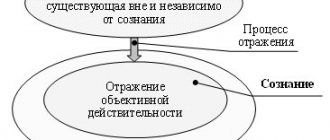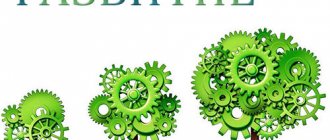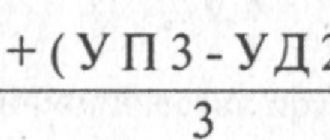We live in the surrounding world, which consists of objects and phenomena. One way or another, they constantly influence our consciousness, and our consciousness perceives them .
A person does not just see what is around him, he does not just hear some sounds or smell. He, sometimes even almost subconsciously, evaluates all this, classifies it, tries to select it from the point of view of some benefit.
The mechanism of human perception is complex and not yet fully understood. But scientists identify certain of its signs, note their features and methods of influencing consciousness.
A person’s perception of the surrounding world in psychology is called perception. The perceptual psyche has many features that have not yet been fully studied.
Sensation and perception: how do these cognitive processes differ from each other? Find out about this from our article.
Concept and classification
Perception (perception) is a diverse process of reflecting phenomena or objects when they directly affect the human senses.
Accordingly, according to the influence of phenomena or objects on certain human sensory organs, types of perception are classified :
- visual,
- auditory,
- olfactory and others
The matter around us exists in the sphere of space, time, movement and direction, and perception is also classified according to these characteristics.
Moreover, we are able to perceive space by distinguishing the sizes of objects at different distances. We understand that a distant object seems smaller in size than the same one that is next to us. But we still perceive them as the same.
Finally, depending on the complexity of the perception process, it is divided into instantaneous (in science it can be defined as simultaneous) and gradual (it is also called successive).
Properties and processes
Perception has characteristic properties:
- objectivity,
- structure,
- integrity,
- selectivity,
- constancy,
- apperception (the so-called dependence on past life experience),
- volume and its limitations.
Perception consists of several sequential perceptual processes:
- detection,
- distinctions,
- identification,
- categorization,
- recognition,
- identification.
Thus, we conclude: the perceptual process is a perception process that allows us (and not only people, but also animals) not just to passively contemplate the environment, but also to evaluate it, to perceive it in development and as a possibility of using this or that subject.
By the way, the use of surrounding objects as tools is one of the initial signs of human thinking.
According to psychologist B. Ananyev, sensory-perceptual processes (he was the first to introduce such a term) are a chain from the senses to a person’s consciousness, and the mechanism of this activity depends on his experience, images fixed in consciousness and even the range of motor functions.
Levels of the perceptual psyche
There are 2 levels of the perceptual psyche , lower and higher.
The lowest level is characteristic of arthropods and mollusks.
They have objective perception, dividing objects into useful ones and those that should be treated with indifference.
reach the highest level of the psyche. They have a highly developed nervous system, with much more diverse movement functions.
New properties and skills appear in their mental perception
- manipulation of objects
- generalization based on visual perception,
- activity with the help of these objects, based on the generalization of all these factors.
During a child’s cognition of the world around him, perceptual actions go through several main stages:
- The first stage involves getting to know the surrounding objects.
- At the second stage, a certain restructuring of the sensory processes that occur in the sense organs occurs, children begin to learn the spatial properties of objects.
- At the third stage, actions in the process of perception no longer play a major role, there are fewer of them, and recognition and comprehension of what is perceived takes on the main role.
BiologyExperts
The lowest level of development of the perceptual psyche
The perceptual psyche is the highest stage of development of mental reflection. Let us recall that this stage is characterized, according to Leontiev, by a change in the structure of activity - the identification of the content of activity related to the conditions in which the object of activity is given in the environment (operation). For this reason, we already encounter genuine skills and perceptions here. The objective components of the environment are reflected as integral units, while in the elementary sensory psyche there was a reflection of only their individual properties or the sum of the latter. Object perception necessarily presupposes a certain degree of generalization, and sensory representations appear.
Of course, the perceptual psyche, characteristic of a huge number of animals at different stages of evolutionary development, reveals great differences in its specific manifestations. Therefore, it is also necessary at this stage of mental development to identify separate levels, of which the lowest will be considered here.
At this level there are primarily higher invertebrates - cephalopods and arthropods (at least the highest). We will give a description of the level of mental development under consideration using the example of insects - the central class of the arthropod type. (In addition to insects, arthropods include crustaceans, arachnids, centipedes, and some small groups.) Insects are the most numerous class of animals, both in the number of species and in the number of individuals. Insects live everywhere on land (in all climatic zones) - both on the surface and in the soil, in all fresh water bodies, as well as in the air, rising to a height of up to two kilometers.
Movements
The huge variety of “ecological niches” occupied by insects and other arthropods naturally led to the development of very different forms of adaptation in the structure and behavior of these animals. The most significant and characteristic feature of the evolution of arthropods, especially insects, was the conquest of a new habitat—land. Arthropods are the first land animals in Earth's history. The transition to land was associated with the development of special organs of movement - limbs in the form of complex levers, consisting of individual segments connected by joints, from which arthropods got their name. Such complex levers (their analogues are the limbs of terrestrial vertebrates) are best used for moving along a solid substrate by pushing away from it. Arthropods are able to move on land in almost all possible ways (crawling, walking, running on both horizontal and vertical surfaces, jumping, moving through the soil). In water, arthropods swim, dive, crawl and even run on its surface.
In addition, in connection with the transition to life in the air, insects for the first time had a completely new method of movement - flight with the help of wings. Insects are capable of developing very high speeds in flight: in some dragonflies it reaches 90 kilometers per hour, in a male gadfly - even 122 kilometers per hour. The frequency of wing beats of many insects is truly amazing. So, a moth makes only 9 beats per second, a bee makes 190, and a housefly makes 330, but in some flies and Hymenoptera the wing vibration speed reaches up to a thousand beats per second. Such rapid movements and, accordingly, frequencies of muscle contractions are not observed in any other animals.
Pages: 1
see also
Refinery wastewater treatment methods Mechanical treatment Mechanical treatment is one of the main and most common methods for treating refinery wastewater. Mechanical cleaning is carried out in sand...
Final chapter. — The extraordinary origin of Olgoy-Khorkhoy “A loud roar overhead made us shudder. It was the radio operator knocking on the roof of the cabin. Leaning towards the window, he tried to shout out the noise of the engine. He pointed to the right with his hand. - What do they have there? - From to …
ON THE BLACK CONTINENT Ex Africa semper aliquid novi (Africa always presents something new). Greek proverb transmitted by Pliny...
Apperception
What is apperception in psychology? The term apperception was introduced into science by the researcher G. Leibniz.
He was the first to prove that perception is simply the perception of reality, and apperception is already conscious .
If we return to what has already been said, we can add that apperception, the highest level of perception, the maximum degree of which belongs to man.
The founder of experimental psychology W. Wund , based on this, proved that the main participation in this process is attention, as part of consciousness.
If attention is not focused on a particular object, awareness of it does not occur . But once the concentration of attention occurs, the process of apperception begins, which is the basis of conscious thinking.
According to Wund's theory of apperception, it was the ability to such perception that made a person human.
Perception inevitably depends on previous experience . Let's say that we generally consider many objects briefly, in passing, because we encounter them every day.
For example, in the morning we will not closely examine the kitchen table at which we have breakfast, or the scrambled eggs that are served for breakfast.
But if we try, say, an avocado for the first time, we will perceive this item differently .
Apperception refers to the dependence of perception on a person’s previous experience.
Moreover, this dependence can be expressed in completely different ways in relation to the same subject .
A child , seeing a circle, will only perceive it as a circle. A student will inevitably remember his geometry lessons. A motorist will immediately think of a wheel, and a circus lover will immediately think of an arena.
Professional skills are of great importance in the perception of the environment.
Let's say, a landscape designer, appearing in an unfamiliar garden or park, will immediately determine the components of this design, a gardener will note the well-groomed nature of the site and the moisture of the soil, and a child will look for places where they can play or hide.
Apperception is largely determined by a person's age and knowledge .
With age, the senses, which are the basis of perception, change, and not always in the direction of development. Hearing , for example, often gets worse with old age. But the child is born with good hearing.
Another thing is vision . It develops throughout a person’s life:
- babies have poor eye movement control and have black-and-white vision,
- at 2 months they consciously perceive depth and distance,
- visual acuity during this period in children is already adequate to these indicators in adults,
- at 3 months they acquire color vision,
Gradually, the child develops perceptual abilities, means that form an idea of the world around him, when its individual manifestations affect the human senses.
The following qualities can be considered the main indicators of such abilities at different stages of a child’s development:
- volume of perception, it is measured by a certain number of objects that the subject can perceive, say, within one minute,
- accuracy of perception, which means the correspondence between the image of an object formed in the mind and the object itself in reality,
- completeness is the degree of such correspondence,
- speed of perception, here the time of final formation of the image of the object in the mind is determined,
- emotional reaction to the subject being studied.
A.N. Leontiev
STAGE OF PERCEPTUAL PSYCHE1
Following the stage of the elementary sensory psyche, the second stage of development can be called the stage of the perceptual psyche. It is characterized by the ability to reflect external objective reality no longer in the form of individual elementary sensations caused by individual properties or their combination, but in the form of a reflection of things.
The transition to this stage of mental development is associated with a change in the structure of animal activity, which is prepared at the previous stage.
This change in the structure of activity consists in the fact that its previously outlined content, which objectively relates not to the object itself to which the animal’s activity is directed, but to the conditions in which this object is objectively given in the environment, is now highlighted. This content is no longer associated with what stimulates activity as a whole, but responds to the special influences that cause it.
So, for example, if a mammal is separated from food by a barrier, then it will, of course, go around it. This means, as in the behavior of a fish described above in a partitioned aquarium, in the activity of this animal we can identify some content that objectively relates not to the food itself, to which it is directed, but to the obstacle, which represents one of those external conditions in which it occurs. this activity. However, there is a big difference between the described activities of fish and mammals. It is expressed in the fact that, while in fish, when the obstacle is subsequently removed, this content of activity (detour movements) is preserved and disappears only gradually.
1Leontyev A.N.
Problems of mental development. 2nd ed. M.: Publishing house Mosk. Univ., 1981. pp. 240-248.
362 Topic 4.
The emergence and development of the psyche
but higher animals in this case usually go straight to the food. This means that the influence towards which the activity of these animals is directed no longer merges with the influence from the obstacle; both act for them separately from each other. The direction and final result of the activity depend on the first, and how it is carried out, i.e., the method of its implementation, for example, by bypassing an obstacle, depends on the second. We will call this special composition or aspect of activity, corresponding to the conditions in which the object stimulating it is given, an operation.
It is precisely the separation of operations in activity that indicates that the properties affecting the animal, which were previously, as it were, side by side for it, begin to be divided into groups: on the one hand, interrelated properties appear that characterize the object to which the activity is directed, and on the other hand, are the properties of objects that determine the very method of activity, i.e. operation. If at the stage of the elementary sensory psyche the differentiation of influencing properties was associated with their simple unification around the dominant stimulus, now for the first time processes of integration of influencing properties into a single holistic image arise, their unification as properties of one and the same thing. The surrounding reality is now reflected by the animal in the form of more or less dismembered images of individual things.
Most of the existing vertebrates stand at different levels of the stage of perceptual psyche. The transition to this stage is apparently associated with the transition of vertebrates to a terrestrial lifestyle.
The emergence and development of the perceptual psyche in animals is due to a number of significant anatomical and physiological changes. The most important of them is the development and change in the role of distant (acting at a distance) sense organs, primarily vision. Their development is expressed in the fact that both their significance in the general system of activity and the form of their anatomical relationships with the central nervous apparatus change. If at the previous stage of development the differentiation of sense organs led to the identification of dominant organs among them, then in vertebrates the leading organs increasingly become organs that integrate external influences. This turns out to be possible due to the simultaneous restructuring of the central nervous system with the formation of the forebrain, and then the cerebral cortex (for the first time in reptiles). <…>
At the same time, the organs of external movements also develop - these “natural tools” of animals, allowing them to carry out complex operations required by life in a terrestrial environment (running, climbing, chasing prey, overcoming obstacles, etc.). The motor functions of animals are also increasingly corticalized (transitioned into the cerebral cortex), so that the full development of operations in animals occurs in connection with the development of the cortex.
Leontyev A.N.
Perceptual psyche stage 363
Thus, if in lower vertebrates their activity is still associated primarily with the underlying centers (subcortical ganglia), then in the future it becomes increasingly dependent on the cortex, changes in the structure of which reflect its entire subsequent development.
The separation of operations, which characterizes the stage of the perceptual psyche, gives rise to the development of a new form of consolidation of animal experience, consolidation in the form of motor skills, in the narrow sense of the term.
Sometimes a skill refers to any connections that arise in an individual's experience. However, with such an expanded understanding of skill, this concept becomes very vague, covering a huge range of completely different processes, ranging from changes in the reactions of ciliates to complex human actions. In contrast to such an unjustified expansion of the concept of skill, we will call only fixed operations skills.
This definition of a skill coincides with the understanding of skills first put forward in our country by V.P. Protopopov, who experimentally showed that motor skills in animals are formed from the motor elements of overcoming an obstacle, that the content of the skills is determined by the nature of the obstacle itself, the stimulus (i.e. the main stimulating influence) affects the skill only dynamically (on the speed and strength of consolidation of the skill) and does not affect its content1.
The motor elements that make up the skills of animals can be of a different nature: these can be both specific, innate movements, and movements acquired through previous experience; finally, these can be movements fixed in the process of those random motor tests that the animal makes in the process of forming this skill.
Clearly expressed skills in the proper sense are observed for the first time only in animals that have a cerebral cortex. Therefore, the physiological basis for the formation of skills should be considered the mechanism of formation and consolidation of systems of cortical conditioned nervous connections.
During the transition to the stage of the perceptual psyche, the sensory form of consolidation of experience also changes qualitatively. Animals experience sensory representations for the first time.
The question of the existence of ideas in animals is still a matter of debate. However, a huge number of facts convincingly indicate that animals have ideas. <…>
Thus, along with a change in the structure of animal activity and a corresponding change in the form of their reflection of reality, a restructuring also occurs in the memory function. Before, on
1 See Protopopov V.P.
Conditional formations of motor skills and their physiological characteristics. Kharkiv; Kyiv, 1935.
364 Topic 4.
The emergence and development of the psyche
stage of the elementary sensory psyche, this function was expressed in the motor sphere of animals in the form of changes under the influence of external influences of movements associated with the animal’s stimulating influence, and in the sensory sphere - in the consolidation of the connection of individual influences. Now, at this higher stage of development, the mnemonic function appears in the motor sphere in the form of motor skills, and in the sensory sphere in the form of primitive figurative memory.
During the transition to the perceptual psyche, the processes of analysis and generalization of the external environment affecting animals undergo even greater changes.
Already at the first stages of mental development, one can observe the processes of differentiation and unification of individual influences by animals. If, for example, an animal that previously reacted equally to two different sounds is placed in such conditions that only one of these sounds is associated with a biologically important effect, then the other gradually ceases to cause any reaction in it. These sounds are differentiated from each other; the animal now reacts selectively. On the contrary, if a number of different sounds are associated with the same biologically important effect, then the animal will respond equally to any of them - they will acquire the same biological meaning for it. Their primitive generalization occurs. Thus, within the stage of the elementary sensory psyche, processes of both differentiation and generalization by animals of individual influences and individual influencing properties are observed. It is important to note that these processes are not determined by an abstract ratio of influences, but depend on their role in the activity of the animal. Therefore, whether animals can easily differentiate between different influences or not, and whether their generalization occurs or not depends not so much on the degree of their objective similarity, but on their specific biological role. For example, bees easily differentiate shapes close to those of a flower, but find it difficult to distinguish even clearly distinct abstract shapes (triangle, square, etc.).
This position remains valid at further stages of development of the animal world. Dogs, for example, react even to insignificant odors of animal origin, but do not react to the smell of flowers, cologne, etc. (Passy and Binet)1. In general, if a given smell acquires a biological meaning for a dog, then it is able to distinguish it very subtly; According to special studies, a dog can distinguish under experimental conditions the smell of organic acids in an insignificant solution - 1:1,000,000.
See Henning H.
Geruchversuche am Hund // Zeitsch. fur Biol. 1921. Bd. 70.
Leontyev A.N.
Perceptual Psyche Stage 365
The main change in the processes of differentiation and generalization during the transition to the perceptual psyche is expressed in the fact that in animals differentiation and generalization of images of things arise. <…>
<…> We observe two interconnected processes: the processes of transferring an operation from one specific situation to another, objectively similar to it, and the processes of forming a generalized image of a thing. Emerging along with the formation of an operation in relation to a given thing and on its basis, the generalized image of this thing allows the transfer of the operation to a new situation in the future; in this process, due to a change in the objective conditions of activity, the previous operation comes into some inconsistency with them and therefore is necessarily modified and rebuilt. Accordingly, the generalized image of a given thing is also restructured, clarified and, as it were, absorbs new content, which, in turn, leads to the possibility of further transfer of the operation to new objective conditions, requiring an even more complete and correctly generalized reflection of them by animals.
A.N.Leontiev STAGE OF INTELLIGENCE1
The psyche of most mammalian animals remains at the stage of the perceptual psyche, but the most highly organized of them rise to one more stage of development.
This new, higher stage is usually called the stage of intellect (or “manual thinking”).
Of course, animal intelligence is not at all the same as human intelligence; There is, as we will see, a huge qualitative difference between them.
The stage of intelligence is characterized by very complex activities and equally complex forms of reflecting reality. Therefore, before talking about the conditions for the transition to the stage of intelligence, it is necessary to describe the activity of animals at this stage of development in its external expression.
The intellectual behavior of the most highly developed animals - apes - was first systematically studied in experiments carried out by Köhler.
These experiments were designed according to the following scheme.
The monkey (chimpanzee) was placed in a cage. Outside the cage, at such a distance from it that the monkey’s hand could not directly reach it, a bait (banana, orange, etc.) was placed. There was a stick inside the cage. A monkey attracted by a bait could bring it closer to itself only under one condition: if it used a stick. How does a monkey behave in such a situation? It turns out that the monkey first of all begins by trying to grab the bait directly with its hand. These attempts do not lead to success. The monkey’s activity seems to fade away for some time. The animal is distracted from the bait and stops its attempts. Then the activity begins again, but now it takes a different path. Without trying to directly grab the fruit with your hand, both
1Leontyev A.N.
Problems of mental development. 2nd ed. M.: Publishing house Mosk. Univ., 1981. pp. 249-261.
Leontyev A.I.
Intelligence stage 367
Zyana takes a stick, extends it towards the fruit, touches it, pulls the stick back, extends it again and pulls it back again, as a result of which the fruit approaches and the monkey grabs it. The problem is solved.
Numerous other tasks that were posed to anthropoid apes were based on the same principle; To solve them, it was also necessary to apply a method of activity that could not be formed in the course of solving this problem. For example, in the enclosure where the animals were kept, bananas were hung on the top grid, which the monkey could not directly grasp. An empty box was placed nearby. The only possible way to get bananas in this situation is to drag the box to the place over which the bait hangs and use it as a stand. Observations show that monkeys solve this problem without noticeable preliminary learning.
So, if at a lower stage of development the operation was formed slowly, through numerous trials, during which successful movements were gradually consolidated, while other, unnecessary movements were just as gradually inhibited and died out, then in this case in the monkey we observe an earlier period of complete failure - many attempts that do not lead to the implementation of the activity, and then, as if suddenly finding an operation that almost immediately leads to success. This is the first characteristic feature of the intellectual activity of animals.
Its second characteristic feature is that if the experiment is repeated again, then this operation, despite the fact that it was carried out only once, is reproduced, i.e. the monkey solves a similar problem without any preliminary tests.
The third feature of this activity is that the solution to the problem found is very easily transferred by the monkey to other conditions, only similar to those in which this solution first appeared. For example, if a monkey solved the problem of approaching a fruit with the help of a stick, then it turns out that if he is now deprived of the stick, he can easily use some other suitable object instead. If you change the position of the fetus in relation to the cage, if you change the situation at all, the animal still immediately finds the desired solution. The solution, i.e. the operation is transferred to another situation and adapts to this new, somewhat different from the first situation.
Among the numerous data obtained in experimental studies of anthropoid apes, one group of facts should be noted that represent some qualitative originality. These facts suggest that apes are capable of combining two different operations in a single activity.
So, for example, outside the cage where the animal is located, bait is placed at some distance from it. Somewhat closer to the cage, but still out of reach of the animal, is a long stick. Other
368 Topic 4.
The emergence and development of the psyche
stick, shorter, which
You can reach a long stick, but you cannot reach the bait, which is placed in the cage. Know-
OOOOOOOOOOOOOOOOOOOOOOOOOOOOOOO cheat in order to solve the problem,
the monkey must take the bo-
_________________________________ „ get a short stick with it
About a long stick, and then with a
use the power of a long stick to push the bait towards you (see Fig. 1). Rice. 1.
Diagram of a two-phase task Monkeys usually cope with
similar “two-phase” tasks without much difficulty. So, the fourth feature of intellectual activity is the ability to solve two-phase problems. <…>
Köhler believed that the main feature that separates the behavior of these animals from the behavior of other representatives of the animal world and which brings it closer to human behavior is precisely that their operations are not formed gradually, through trial and error, but arise suddenly, regardless of previous experience, as if by guess1. He considered the second sign of intellectual behavior, derived from the first, the ability to remember the solution found “once and for all” and its widespread transfer to other conditions similar to the initial conditions. As for the fact that monkeys solve two-phase problems, Köhler and the authors following him believe that it is based on a combination of both factors: the animal’s “guess” and the transfer of a previously found solution. Thus, they consider this fact as not of fundamental importance.
From this point of view, in order to understand all the uniqueness of the intellectual activity of monkeys, it is enough to explain the main fact - the fact that the animal suddenly found a way to solve the first initial problem.
Köhler tried to explain this fact by the fact that anthropoid apes have the ability to correlate in perception individual distinguished things with each other so that they are perceived as forming a single “integral situation.”
This very property of perception - its structure - is, according to Köhler, only a special case expressing the general “principle of structure”, which supposedly initially lies not only at the basis of the psyche! animals and humans and at the basis of their life activity, but also in the ochobi of the entire physical world.
From this point of view, the “structural principle” can serve as an explanatory principle, but is itself further inexplicable and does not require explanation
1 See Koehler V.
A study of the intelligence of great apes. M., 1930.
Leontyev A.N.
Intelligence stage 369
Of course, the attempt to reveal the essence of intelligence based on this idealistic “Gestalt theory” turned out to be untenable. It is absolutely clear that using the structure of perception to explain the unique behavior of higher animals is insufficient. Indeed, from the point of view of supporters of the “structural principle,” structural perception is characteristic not only of great apes. It is also characteristic of much less developed animals; however, these animals do not exhibit intelligent behavior.
This explanation turned out to be unsatisfactory on the other hand. Emphasizing the suddenness of an intellectual decision and isolating this fact from the content of the animal’s experience, Koehler did not take into account a whole series of circumstances characterizing the behavior of monkeys in the natural conditions of their life.
K. Bühler seems to have been the first to point out that there is something in common between bringing a fruit closer to you with a stick and drawing a fruit growing on a tree towards you with a branch. Further, attention was drawn to the fact that the detours observed in apes can also be explained by the fact that these animals, living in forests and moving from one tree to another, must constantly first “try on” the path, since otherwise the animal may find himself at a dead end in the natural labyrinth formed by trees. Therefore, it is no coincidence that monkeys show a developed ability to solve problems using “workarounds”1.
In later works by psychologists and physiologists, the idea that the explanation of the intellectual behavior of monkeys should be sought primarily in its connection with their usual species behavior in natural conditions of existence began to be expressed even more definitely.
From this point of view, an intellectual “solution” is nothing more than the application in new conditions of a phylogenetically developed method of action. This transfer of mode of action differs from the usual transfer of operations in other animals only in that it occurs within wider boundaries.
So, according to this understanding of the intellectual behavior of monkeys, its main features, identified by Köhler, should be correlated with each other in reverse order. It is not the fact of transfer of the found solution that should be explained by its special nature (suddenness), but, on the contrary, the very fact of the sudden solution of the experimental problem should be understood as a result of the ability of these animals to widely transfer operations.
This understanding of the intellectual behavior of monkeys is in good agreement with some facts and has the advantage that it does not contrast the animal’s intelligence with its individual or species intelligence.
1 See Bühler K.
Fundamentals of mental development. M., 1924.
24 Zak. 2652
370 Topic 4.
The emergence and development of the psyche
experience does not separate intelligence from skills. However, this understanding of intellectual behavior also encounters serious difficulties. First of all, it is clear that neither the formation of an operation nor its transfer to new conditions of activity can serve as distinctive features of the behavior of higher apes, since both of these moments are also characteristic of animals at a lower stage of development. We observe both of these moments, although in a less vivid form, also in many other animals - mammals, birds. It turns out that the difference in activity and psyche between these animals and anthropoid apes comes down to a purely quantitative difference: slower or faster formation of an operation, narrower or wider transfers. But the behavior of anthropoid apes differs from the behavior of lower mammals in a qualitative sense. The use of funds and the special nature of their operations clearly demonstrate this.
Further, the above understanding of animal intelligence leaves the most important thing undisclosed, namely, what constitutes the wide transfer of action observed in monkeys and what is the explanation for this fact.
To answer these questions, it is necessary to once again reverse the features of the intellectual behavior of animals indicated by Köhler and make the starting point for the analysis a third characteristic fact, which, in Köhler’s opinion, is not of fundamental importance - the ability of monkeys to solve two-phase problems.
In two-phase problems, the two-phase nature of any
intellectual activity of the animal. You need to get the stick first, then get the fruit. You need to push the fetus away from you first, and then go around the cage and get it from the opposite side. Reaching the stick itself leads to mastery of the stick, and not of the fruit that attracts the animal. This is the first phase. Without connection with the next phase, it is devoid of any biological meaning. This is the preparation phase. The second phase - using a stick - is already the phase of carrying out the activity as a whole, aimed at satisfying a given biological need of the animal. Thus, if from this point of view we approach the monkeys’ solution to any of the tasks that Köhler gave them, then it turns out that each of them requires two-phase activity: take a stick - bring the fruit closer to you, move away from the bait - seize the bait, turn over the box - get the fruit, etc.
What is the content of both of these phases of the monkey’s activity? The first, preparatory phase is obviously not stimulated by the object at which it is directed, for example, not by the stick itself. If a monkey sees a stick in a situation that requires not using the stick, but, for example, a workaround, then it will, of course, not try to take it. Know-
Leontyev A.N.
Intelligence stage 371
cheat, this phase of activity in the monkey is associated not with the stick, but with the objective relationship of the stick to the fruit. The reaction to this attitude is nothing more than the preparation of the further, second phase of activity - the phase of implementation.
What is this second phase? It is already directed at the object that directly motivates the animal, and is built depending on certain objective-subject conditions. It therefore includes one or another operation, which becomes a fairly strong skill.
Thus, during the transition to the third, highest, stage of animal development, a new complication in the structure of activity is observed. Previously merged into a single process, the activity is now differentiated into two phases: the preparation phase and the implementation phase. The presence of a preparation phase constitutes a characteristic feature of intellectual behavior. Intelligence arises, therefore, for the first time where the process of preparing the opportunity to carry out a particular operation or skill arises.
An essential feature of two-phase activity is that new conditions cause the animal not just to try movements, but to try out various previously developed methods and operations. How, for example, does a chicken behave if it is driven from behind a fence? Trying to get out, she blindly rushes from side to side, i.e. she simply increases her motor activity until, finally, a random movement leads her to success. Higher animals behave differently in the face of difficulty. They also make tests, but these are not tests of various movements, but, first of all, tests of various operations, methods of activity. Thus, when dealing with a locked box, the monkey first tries the habitual operation of pressing the lever; when she fails, she tries to chew the corner of the box; then a new method is used: to enter the box through the door gap; then follows an attempt to chew off the lever, which is replaced by an attempt to pull it out with your hand; finally, when this fails, she uses the last method - she tries to turn the box over (Buytendijk).
This feature of the behavior of monkeys, which consists in the fact that they can solve the same problem in many ways, seems to us the most important evidence that in them, like in other animals at the same stage of development, the operation ceases to be fixedly connected with an activity that corresponds to a specific task, and for its transfer does not require that the new task be directly similar to the previous one.
Let us now consider intellectual activity from the perspective of animals’ reflection of the reality around them.
In its external expression, the first, main, phase of intellectual activity is aimed at preparing its second phase, i.e. is objectively determined by the subsequent activity of the animal itself. Know-
372 Topic 4.
The emergence and development of the psyche
Does this mean, however, that the animal has in mind its subsequent operation, that it is capable of imagining it? This assumption is unfounded. The first phase corresponds to the objective relationship between things. This relationship of things must be reflected by the animal. This means that during the transition to intellectual activity, the form of mental reflection by animals actually changes only in that there is a reflection of not only individual things, but also their relationships (situations).
Accordingly, the nature of transfer and, consequently, the nature of animal generalizations also changes. Now the transfer of an operation is a transfer not only according to the principle of similarity of things (for example, an obstacle) with which this operation was connected, but also according to the principle of similarity of relationships, connections of things to which it corresponds (for example, a branch - a fruit). The animal now generalizes the relationships and connections of things. These generalizations of the animal, of course, are formed in the same way as its generalized reflection of things, i.e. in the process of activity itself.
The emergence and development of animal intelligence has its anatomical and physiological basis in the further development of the cerebral cortex and its functions. What are the main changes in the cortex that we observe at the highest stages of development of the animal world? What is new that distinguishes the brain of higher mammals from the brain of lower animals is the relatively much larger space occupied by the frontal cortex, the development of which occurs due to the differentiation of its prefrontal fields.
As Jacobsen's experimental studies show, extirpation (removal) of the anterior part of the frontal lobes in higher monkeys, who solved a series of complex problems before the operation, leads to the fact that it becomes impossible for them to solve two-phase problems, while the already established operation of getting the bait with the help of sticks are completely preserved. Since a similar effect is not created by the extirpation of any other fields of the cerebral cortex, it can be assumed that these new fields are specifically associated with the implementation of two-phase activity by animals.
A study of the intelligence of great apes shows that human thinking has its real preparation in the animal world, and that in this respect there is no impassable gap between man and his animal ancestors. However, while noting the natural continuity in the development of the psyche of animals and humans, one should not exaggerate their similarities, as is done by some modern animal psychologists, who seek to prove with their experiments with monkeys the supposed eternity and nature-conformity of even such “intellectual behavior” as work for pay and monetary exchange1 .
1CM.Wolfe YB
Effectiveness of Token Rewards for Chimpanzees // Sotr. Psycho]. Monog. 1936. V. XII.
Leontyev A.N.
Intelligence stage 373
Attempts to sharply contrast the intellectual behavior of apes with the behavior of other higher mammals are also incorrect. Currently, we have numerous facts indicating that two-phase activity can be found in many higher animals, including dogs, raccoons and even cats (though in the latter, which belong to the “waiting” animals, only in a very peculiar way).
So, intellectual behavior, which is characteristic of higher mammals and which reaches a particularly high development in apes, represents the upper limit of the development of the psyche, beyond which the history of the development of the psyche of a completely different, new type, characteristic only of man, begins - the history of the development of human consciousness.
Labor activity and the emergence of consciousness. Comparison of the psyche of animals and humans









